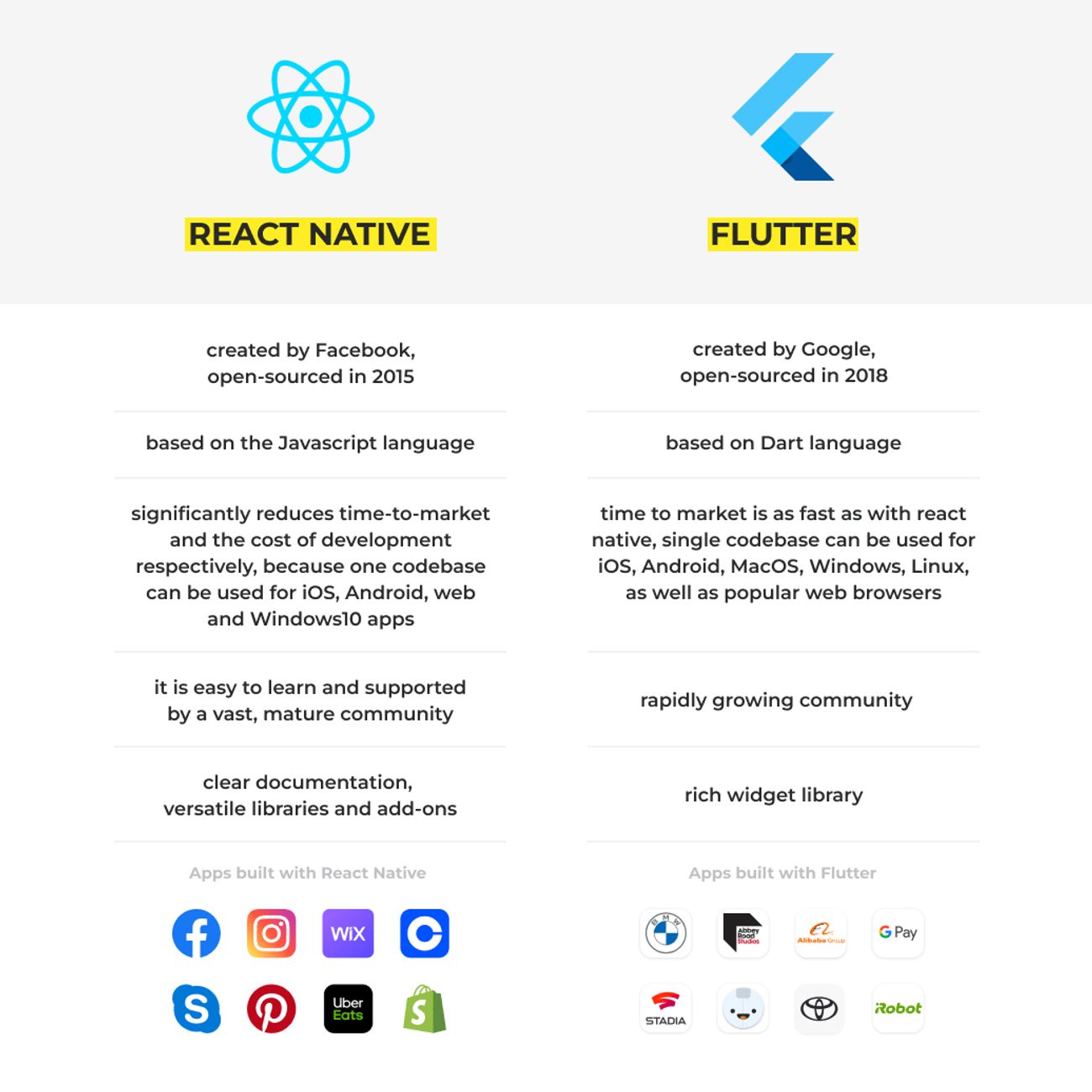While the trends of the market keep changing, ever since the trade was invented, one thing that still holds true is to be popular you have to be accessible. The more users can reach and try your products, the more of them will choose you in the end. Mobile applications do just that – they put brands and products at a distance of a fingertip, providing accessibility which would have felt like magic just a few decades ago.
The demand for mobile apps is continuously growing, and by July 2022 there are over 6 billion applications available in popular app markets such as Google and Apple. How are they built? Native app development is still strongly recommended by Google and Apple as the best approach, but with the rise of cross-platform technologies such as React Native and Flutter, the discussion emerges, about whether the landscape in mobile app development is gonna change soon with cross-platform replacing native approaches.
We’ll reflect on that, but first, let’s define the terms.
A native solution, as the name implies, is about developing an application in a native programming language, such as Java or Kotlin for Android, Objective-C or Swift for iOS. Being deeply focused on the operating system, native solution provides access to all the functions of the OS, allows the maximum customization of the interface possible and prevents any performance problems. On the other hand, if you want to reach both types, iOS & Android users, you will have to create two separate applications that essentially require more time, money, and effort.
Cross-platform mobile development allows you to cover both operating systems, iOS and Android, with one code. Not exclusively these two since cross-platform tools work with other OS, but for the sake of this post, we will focus on iOS and Android solely. Cross-platform frameworks do not involve writing code in a native programming language, but they still provide a native-like experience and interface. Today, many companies use cross-platform solutions, whilst some are already seriously considering switching to them. These are not only vendors of the solutions themselves, such as Facebook with its React Native, but also other major market players, such as Alibaba, Hamilton, Groupon and others built on Flutter.
Why do giants like Facebook switch from native to cross-platform?
The development of apps for different platforms goes simultaneously. It saves time and money.
Cross-platform applications are consistent across platforms.
Reduces development time and the need for multiple developers (and therefore, it is cheaper).
Updates and security patches can be released simultaneously for both platforms. Time and money, again.
Greater time can be spent on the optimization of apps to improve speed and reduce storage.
Will Apple and Google persuade native coding?
At the moment they do. And we believe that brands like Apple will be persuading developers to code in their native languages and development platforms rather than using multi-platform frameworks like React Native.
On the other hand, Google has invested in Flutter, a mighty tool for cross-platform mobile app development. Considering the Google Play weight at the mobile app market it could be a sign of a shift in the paradigm in the nearest future.
Which cross-platform solutions are the most popular now?
There are lots of cross-platform technologies on the market, but the most popular and efficient at the moment are Facebook’s React Native and Google’s Flutter.
React Native started as an internal Facebook project in 2013 and was open-sourced on GitHub in 2015. In 2018 Google came out with Flutter, which gave exactly the same opportunity as React Native: one codebase for multiple platforms.
Although from the developer’s perspective these tools are different (and there are continuous fights on the Internet among the supporters of one or another), they bring pretty much the same value and opportunities for businesses.
Both technologies are open-sourced and free to use, supported by giants and loyal developer communities. Both tools reduce time-to-market, providing a smooth development process resulting in well-performing apps.
Cross-platform may not be the only future of mobile app development but the cross-platform’s future is, for sure, promising. Technologies are evolving, and time is running faster, and the baseline for success today is to build a product, which is accessible on various operating systems, and to make it fast. That is why it is beneficial to consider cross-platform each time you are thinking to build an app.
In our experience, most of the apps on the market can be built with cross-platform tools. Yes, there are projects which urge for native development, and you can explore these cases in our recent blogpost on four approaches to build a mobile app. Yet today the majority of business apps just don’t need native anymore.

